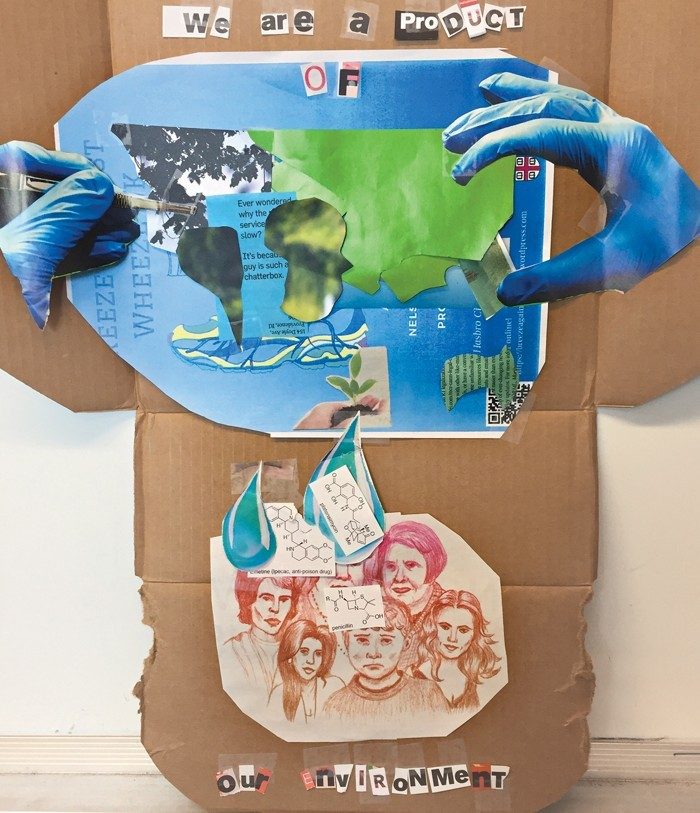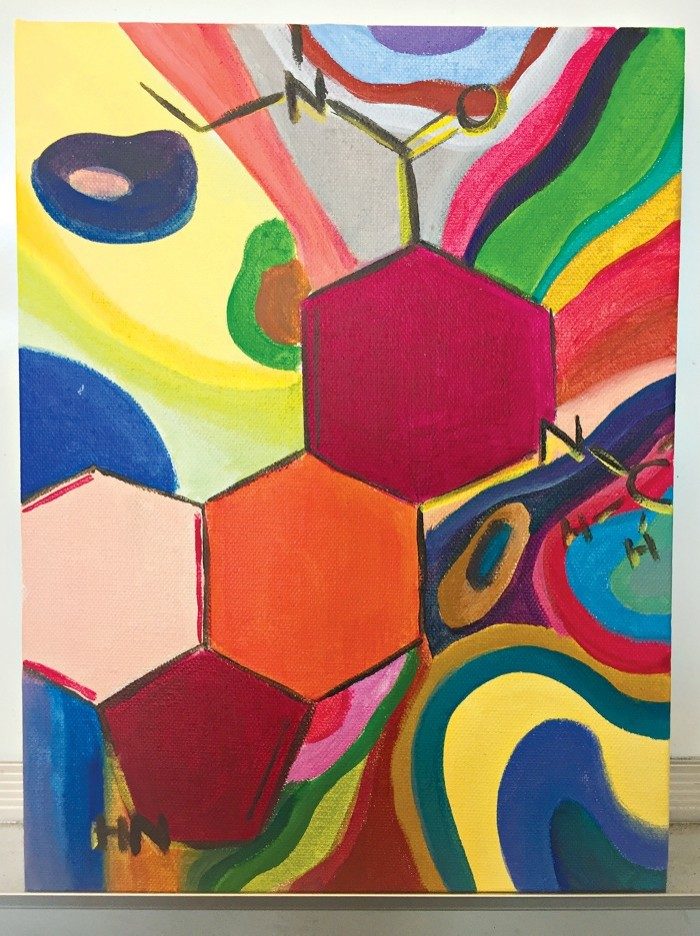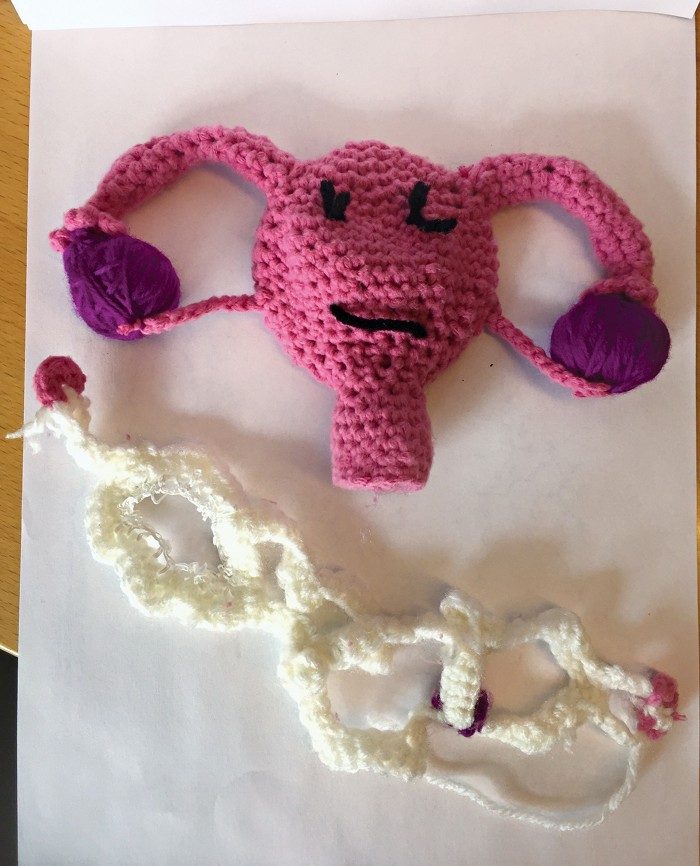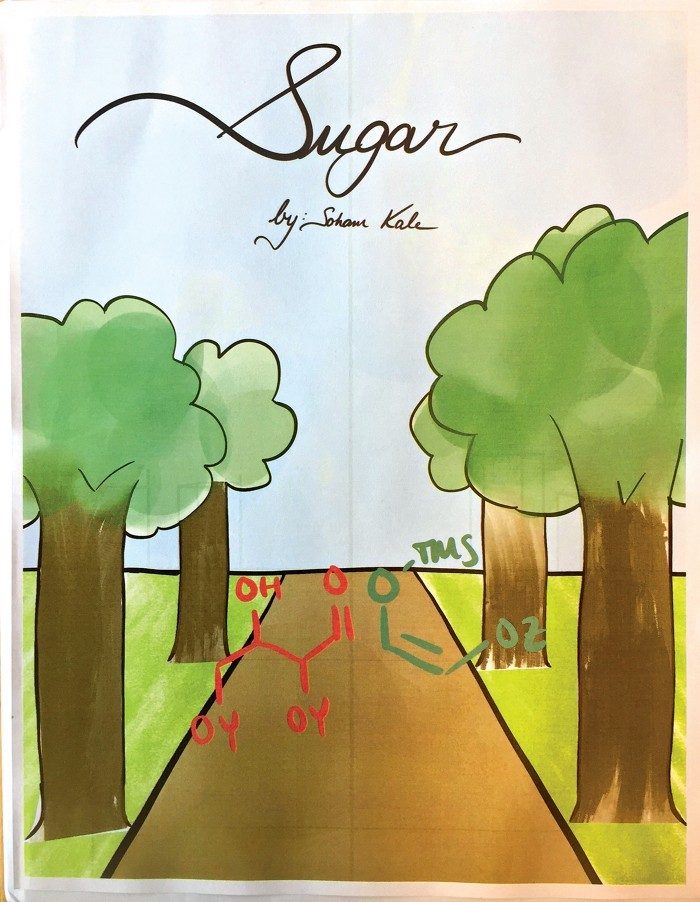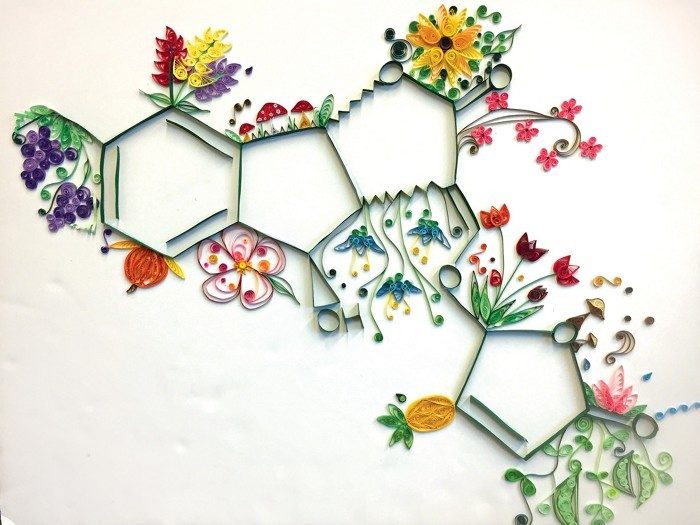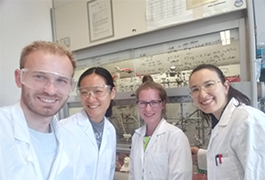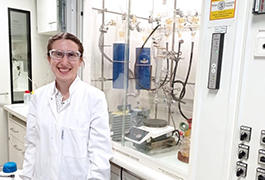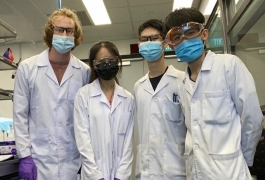Chemistry Class as Art Gallery
By Celia Henry Arnaud, for C&EN
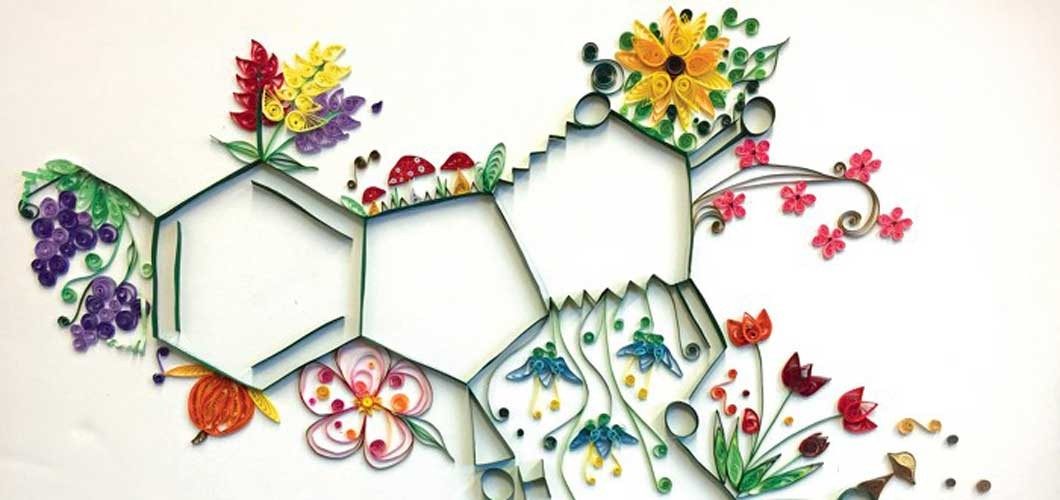
At the end of the spring 2019 semester, Amit Basu, a chemistry professor at Brown University, turned his advanced organic class into an art gallery and performance space.
In the class, each student chooses a total synthesis of a natural product from the research literature. Throughout the semester, the students use their syntheses as the basis of multiple assignments. Most of those assignments are ones you’d expect to find in a chemistry class—a scientific poster and a paper describing the reaction mechanisms. But this year’s class featured an unexpected assignment.
For the unusual assignment, Basu prompted the students to come up with a piece of artwork that was conceptually related to their molecule. He defined art as broadly as possible. Students could choose any medium in the visual, literary, or performing arts.
Basu’s class is a writing-designated—or WRIT—course. Brown has an open curriculum with no distribution requirements. Students are free to design their own courses of study, but they have to take at least two WRIT courses.

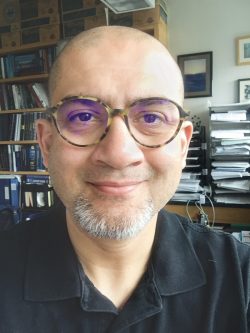
Basu gave the art assignment with the intention of providing students with another avenue to communicate about their molecules and syntheses. “One of the things I try to communicate in my courses is that the ability to communicate is an integral part of being a scientist,” Basu says.
He also saw the assignment as a way to fight the “two cultures” myth about the cultural divide between the sciences and humanities—an idea that persists in broader society (read more about the sciences-humanities divide here). “I’m evangelical about the value of a liberal arts education,” he says. He advocates thinking broadly and looking for ways to make connections between disciplines as seemingly disparate as chemistry and the arts.
Basu didn’t know what to expect from the end-of-semester art show. He was pleasantly surprised.
As he had intended, the students interpreted “artwork” quite broadly. One student did origami and wrote a poem about the anticancer molecule ovalicin. Another student, whose molecule was estrone, crocheted a model of a human uterus and the hormone. One student created a psychedelic painting in honor of lysergic acid, a precursor of the drug LSD. The most elaborate artwork used quilling—a technique involving paper scrolls—to illustrate a plant hormone. Other students’ projects fell more into the realm of performance art.
Basu was so pleased with the results that he plans to do something similar in the future. This time, he let the art itself serve as the writing project; in future iterations, he thinks he will incorporate a student’s suggestion and require students to write an artist’s statement explaining how they chose their media, making explicit the connections between the artwork and their molecules.
